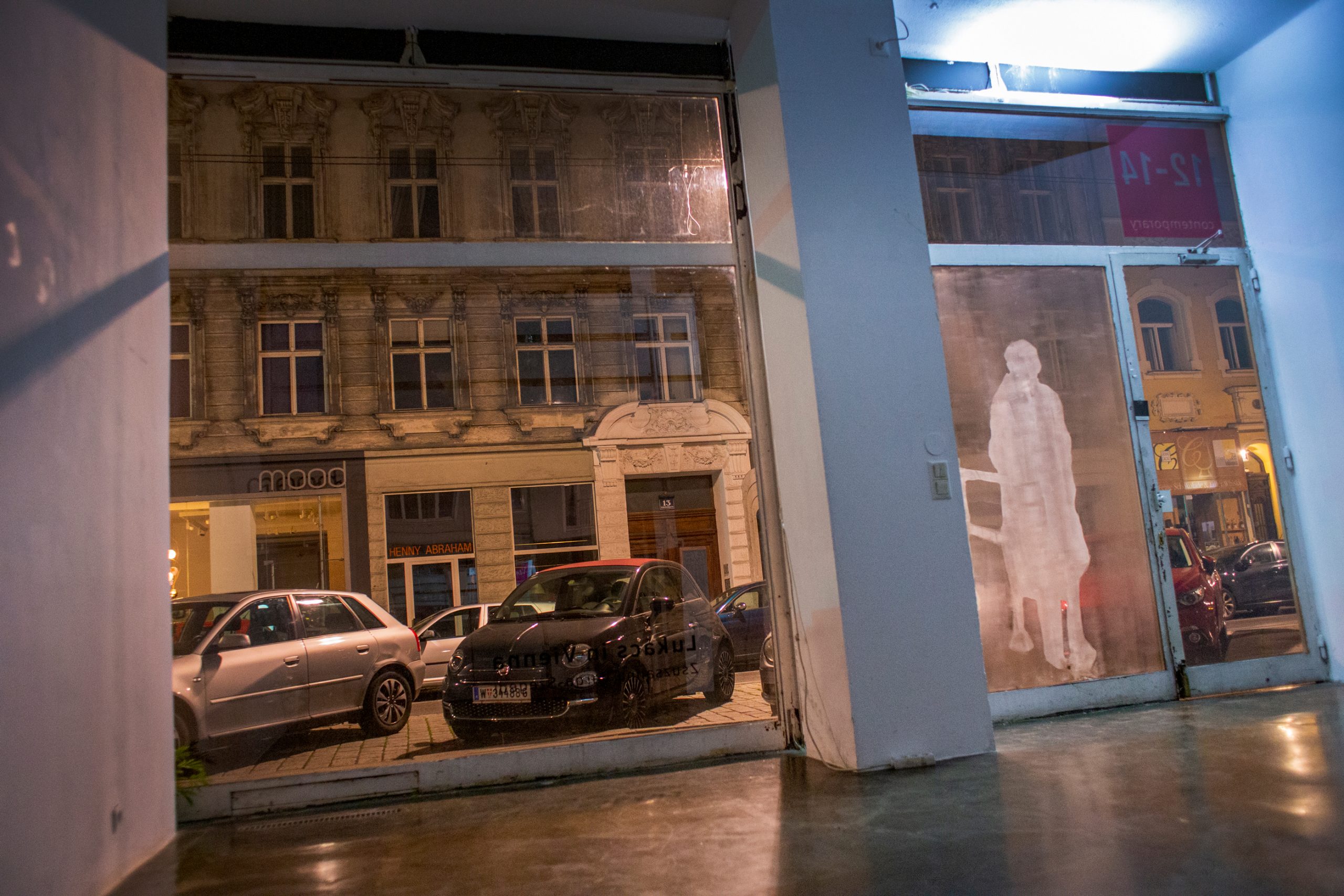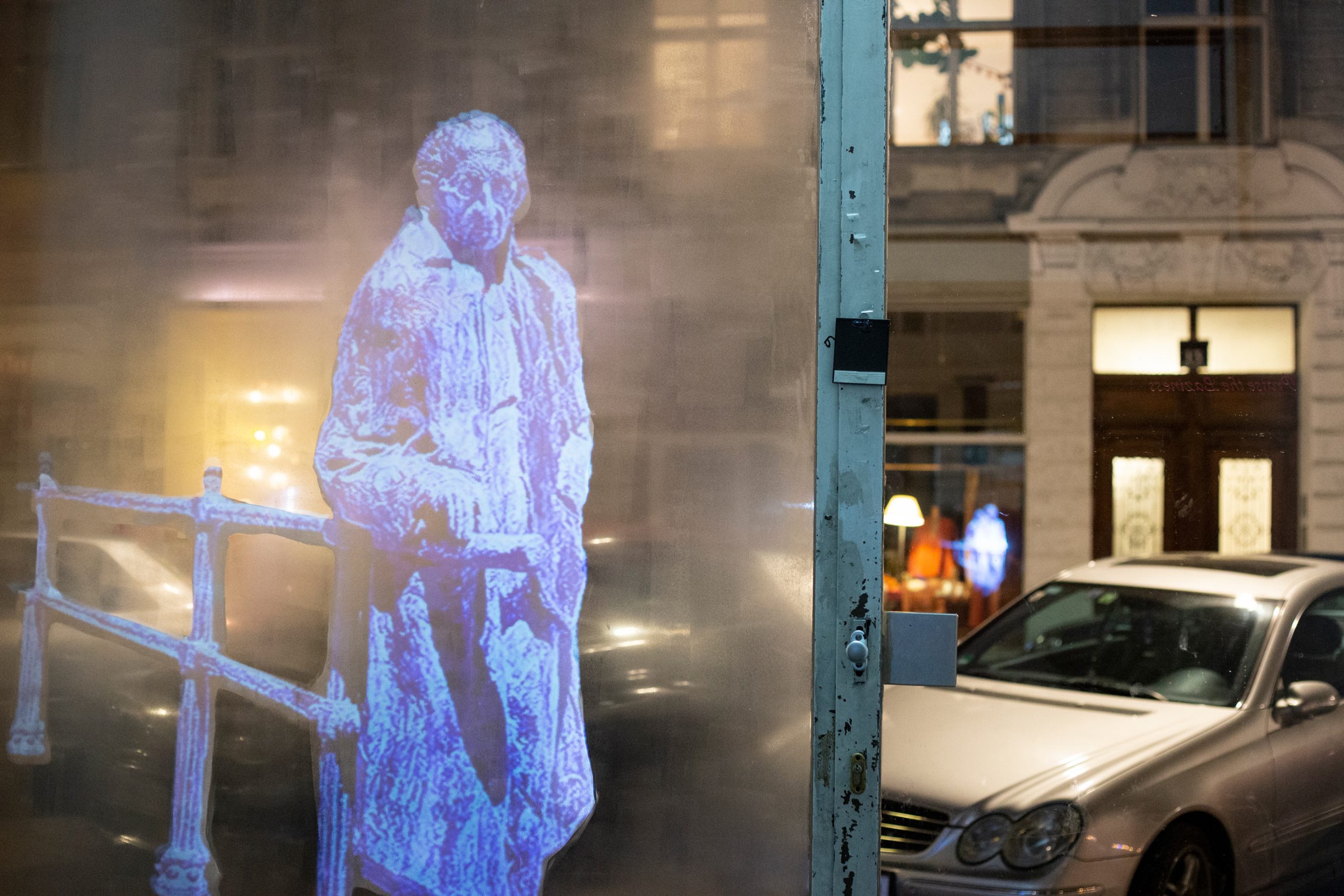The Ghost of Lukacs is an ongoing project that virtually revives the recently removed monument to the Jewish, Marxist, Hungarian critical thinker György Lukács (b. Budapest, 1885, d. 1971). The work was originally presented in 2019 for the exhibition In the Words, In the Bones curated by Magdalena Moskalewicz. After its first appearance in Boston, it traveled to Tel Aviv, Rome, Paris, Krapanj Island, Vienna, and most recently in Salem, MA.
In 2017 the right-wing populist Hungarian government removed the melancholic statue of Lukács by Hungarian artist Imre Varga in Budapest’s Saint Stephens park where it had been installed since 1985. Viktor Orbán’s government declared Lukács an enemy of the people, made the public pronunciation of his name illegal and blocked all access to his archives as part of an effort to erase both the country’s Communist past and Lukács’ intellectual heritage and Jewish presence.
Who asked Lukács if he wanted a static and monumental statue in his memory? It recalls Walter Benjamin’s statement, “Even the dead will not be safe from the enemy if he wins.” Across the world people have been reckoning with who deserves to be memorialized, and what form of representation can even hold our complex histories. Considering the larger global context of commemorative public sculptures reveals the tensions and hypocrisies of such forms. In 1980, in an effort to highlight this hypocrisy Polish artist Krzysztof Wodiczko began reclaiming historic monuments by projecting images of marginalized subjects onto their facades. Hauntingly, Tiananmen Square has no physical marker devoted to the massacred protesters in June of 1989 and the event remains censored in China. As of 1993 Hungary’s communist-era statues found a home in Budapest’s Memento Park where they are preserved and visited by 40,000 people a year. Most recently protestors in Boston beheaded a statue of a once-venerated Christopher Columbus while protestors in Bristol toppled a monument to the enslaver and trader Edward Colston.
“What language or format do we use, when official narratives override and erase the histories of the individual?”
asks Hungarian-born, Boston-based interdisciplinary artist Zsuzsanna Varga-Szegedi. Reacting to the Hungarian government’s attempts to erase Lukacs’ memory from collective consciousness, the artist meditates on the implications of its absence through the visual reappearance of Lukacs. Subverting the power and monetary dynamics involved with the erecting of sculptures with the ephemeral material of the light projection, Varga-Szegedi projects the image of the original statue on different public locations to bring Lukács’ haunting presence to various urban spaces. New technologies give the artist a means to further investigate memorial materiality at large and the legacies that fall outside of nationalistic agendas but are worth remembering.
This website only begins to map out the variants of the elusive Lukács story, the removal of his statue, and the multifaceted significance of its absence through Varga-Szegedi’s artistic projects and interdisciplinary texts considering the removals, materials and transformations of memorializing forms. Where does Lukács and his legacy fit within the slippery nature of collective memory today on a local and global scale? We invite you to sit with these questions and ruminate on them here.

